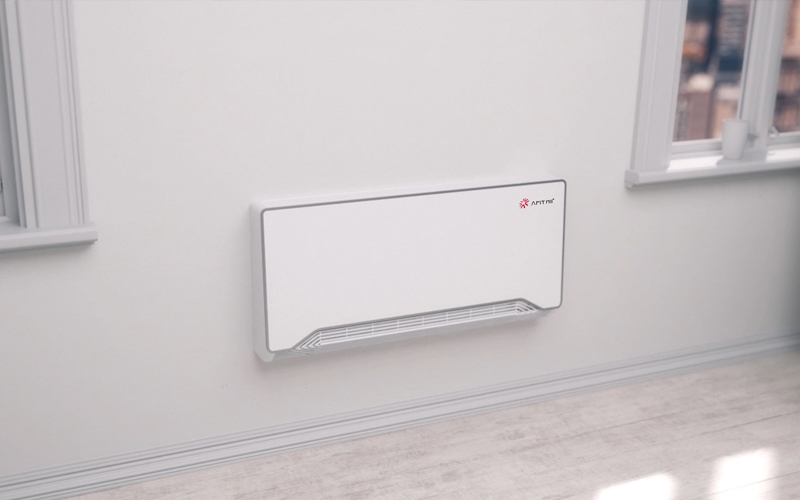The hydronic fan coil unit, or hydronic fan coil heater, mainly consists of components such as a heat exchanger, water pipes, filters, fans, a water collection tray, an exhaust valve, and a bracket. It regulates the air temperature by circulating cold or hot water through internal coils. Indoor air is drawn in by the fan and flows through the coils. During this process, the air contacts the coils and undergoes heat exchange, thereby achieving cooling or heating effects. In the cooling cycle, the cold water absorbs heat from the air; in the heating cycle, the hot water releases heat to the air.
Hydronic heating fan coil units can be classified according to the number of coils into two-coil and three-coil units. Generally, a two-coil unit has two rows of copper pipes, with 8 pipes per row, totaling 16 copper pipes; a three-coil unit has three rows, with 8 pipes per row, totaling 24 pipes. The more copper pipes there are, the better the cooling effect.
By system, they can be divided into two-pipe and four-pipe units. Two-pipe system: A standard hydronic fan coil heater circulates cold water for cooling in summer and hot water for heating in winter. Four-pipe system: Often used in more luxurious venues, it can simultaneously circulate cold water and hot water, allowing some rooms to be cooled while others are heated as needed.
Amitime, the top-tier heat pump supplier, is experienced in producing ultra thin hydronic fan coil units, including SU series hydronic wall mounted fan coil units, BM series hydronic cassette fan coil units and more, which can fit diverse conditions.

Hydronic heating fan coil units are multi-functional air conditioning equipment widely used in building and industrial fields. It regulates indoor temperature, humidity, and air quality through air circulation, providing people with a comfortable indoor environment.
In the building sector, hydronic fan coil heaters are commonly used in residential, commercial, and office buildings. They are particularly favored in hotels, office buildings, meeting rooms, etc. Due to their flexible regulation and unit-based characteristics, they can meet the needs of different air conditioning users.
In the industrial field, hydronic fan coil units also play an important role. They can control the temperature, humidity, and air quality during industrial production processes, improving production efficiency and product quality. These units are especially widely used in the food, pharmaceutical, and chemical industries.
Additionally, hydronic fan coil heaters have the advantages of fast temperature regulation, low noise, and good air quality. However, they also occupy a certain amount of space and require long-term operation and regular maintenance and cleaning.
In summary, hydronic fan coil heaters are widely used in various fields such as building and industry due to their efficiency, flexibility, and comfort, creating a more comfortable and healthy indoor environment for people.
R290 heat pump EcoSTAR M-AIO range
Ecostar M-FM range residential R290 heat pump price
Aquastar series R290 heat pump water heater
Gemini-FI series wholesale pool heat pumps
Residential R32 heat pump HEATtstar M-CB range
HEATstart series residential R32 heat pumps
Heat pump R32 HEATstar M-FM range
Understanding of air source heat pump for indoor swimming pool